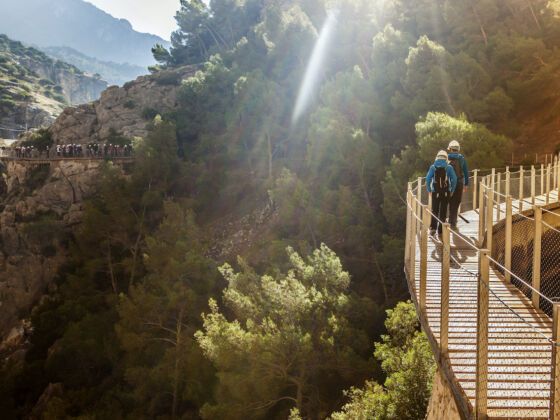“Extreme.” What a word. Our collective conscience has stretched “extreme” to its literal — pun possibly intended — extreme, thanks to such cultural forces as: Mountain Dew, the X-Games, Most Extreme Elimination Challenge, Extreme Couponing, and any number of things preferring the “Xtreme” spelling. We think of things tied to this word as being unattainable, or illogical, or dangerous, or existing only at the furthest limits of the human imagination — but at the same time, their significance is on some level arbitrary: Is there really much difference between standing atop Mt. Everest and standing one step below?
Nonetheless, we continue to seek out these places for the undeniable feeling you get standing directly at them — and knowing, in that moment, that nothing on Earth exceeds the level you have reached. Below: 9 places — each claiming its own various extremes — that you definitely can and should visit in your lifetime, if only just to know exactly where you stand on Earth for a moment.
1. Cape Blanco, OR
The westernmost point of Oregon, and a tie for westernmost point of the contiguous USA (due to land shifts and tides and whatnot), but also one of the windiest spots on Earth. Easily accessible by car.
2. Death Valley, CA
Death Valley is a land of extreme heat, cold, and altitude — or lack thereof, as it is the lowest point in the United States. And it’s surprisingly accessible. You can easily visit the place by car, given some time and a full gas tank.
3. Key West, FL
Driving to Key West always feels like a pilgrimage: You’re cruising down a preposterously narrow highway, which leads to a bridge spanning far out into the ocean, and suddenly you arrive in the southernmost city in the continental United States. Plenty has been said about what goes on in the place, but in my opinion, it’s the journey there that makes it a truly “extreme” place in its own right.
4. Quoddy Head, ME
The easternmost point of the United States. Or the closest point in the US to Europe. Or the first place in the US to see the sun rise. Or just a pretty lighthouse in Maine. Plenty of things to call this place — you’ll decide what it means to you whenever you arrive.
5. Tarifa, Spain
The southernmost point of continental Europe, and one of the windiest spots on Earth. A haven for kitesurfers, windsurfers, and any winged creatures looking for an easy place to glide between continents. Easily accessible by car in Spain (you can also fly straight into Gibraltar airport from the US). Or if you happen to be in Morocco, just take the ferry over from Tangier. It’s only about 10 miles.
6. Meghalaya, India
The wettest place on Earth. Of course, this title does not come without some caveat — Mauna Kea in Hawaii gets more rain than any other place, but no one can live there. Here in Meghalaya — the name itself means “place of the clouds” — residents get about 470 inches of rain per year. And while it’s somewhat remote, plenty of local guides will show you the area, including the waterfalls that only occur during the monsoon season.
7. Chimborazo, Ecuador
There’s a good chance you’ve heard of Chimborazo. Technically, it is the highest point on Earth — if you’re measuring from the center (instead of from sea level). But the similarities with Everest end there, as it’s a far easier climb than — not to mention far more accessible to the Western world than the Himalayas.
8. Green Bank, WV
“The quietest place in America” doesn’t sound like an official distinction — but you’d be hard pressed to find somewhere better fitting that qualification than Green Bank, West Virginia, where the National Radio Astronomy Observatory lives. The FCC mandated a 13,000-square-mile “quiet zone,” regulating all electronics in the area. Oh, also: The telescope is larger than the statue of liberty, and its dish could hold a football field.
9. El Caminito del Rey, Spain
El Caminito del Rey. In Spanish, it means “the King’s Little Road.” But in English people call it “the most dangerous walkway on Earth.” And for good reason: It’s a miniscule and badly damaged pathway clinging to the side of a 600-foot cliff. But at the same time, it’s probably also one of the safest, because few other walkways have steel wire running across in order to secure you from falling.

